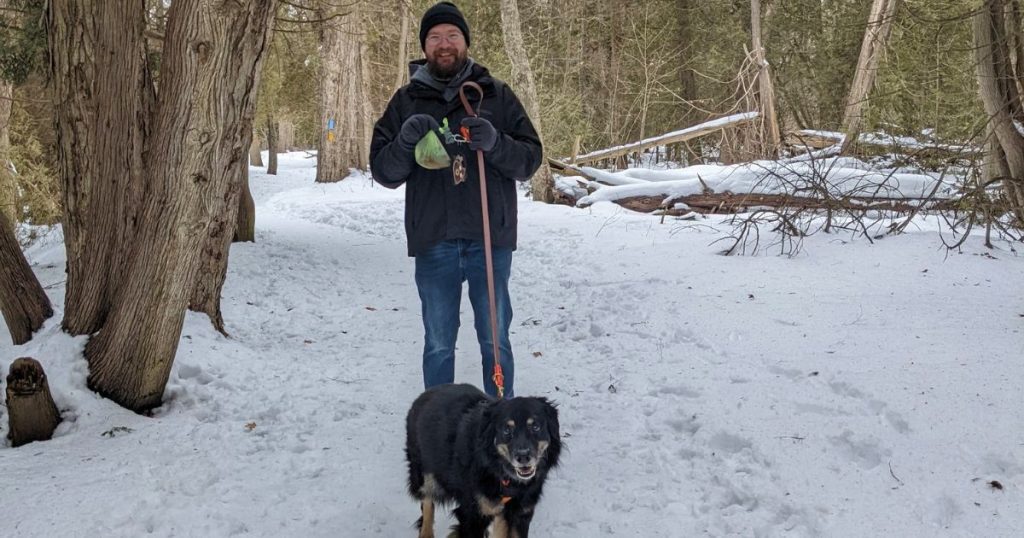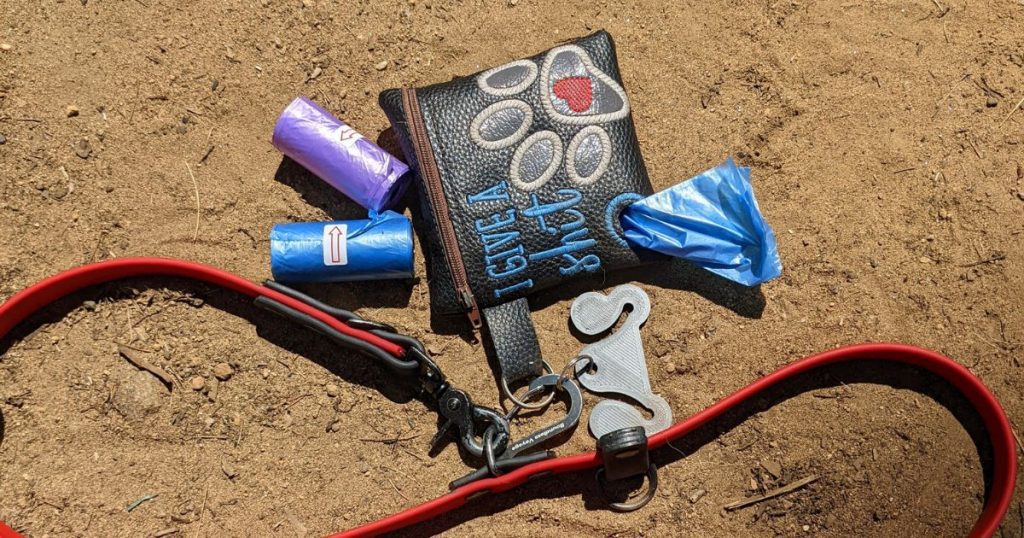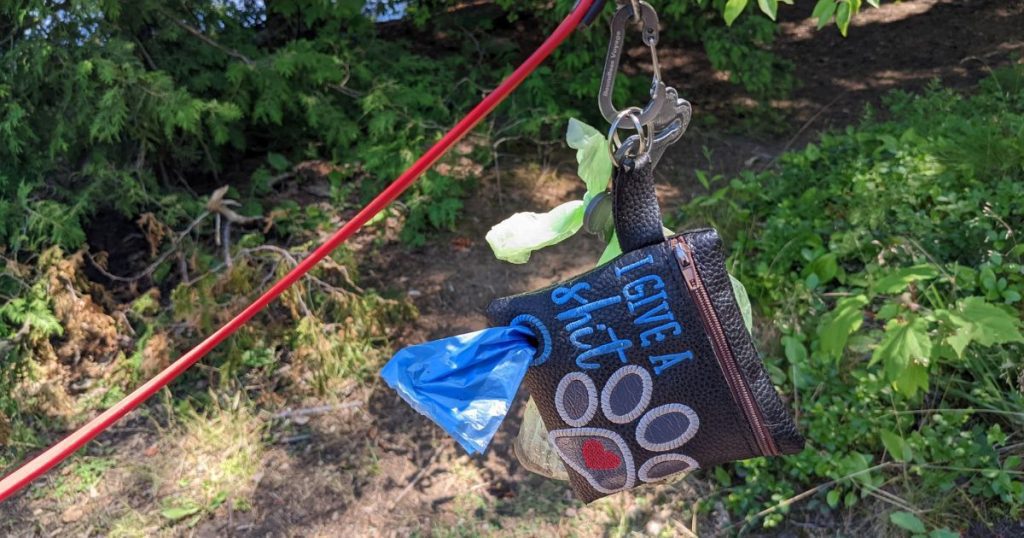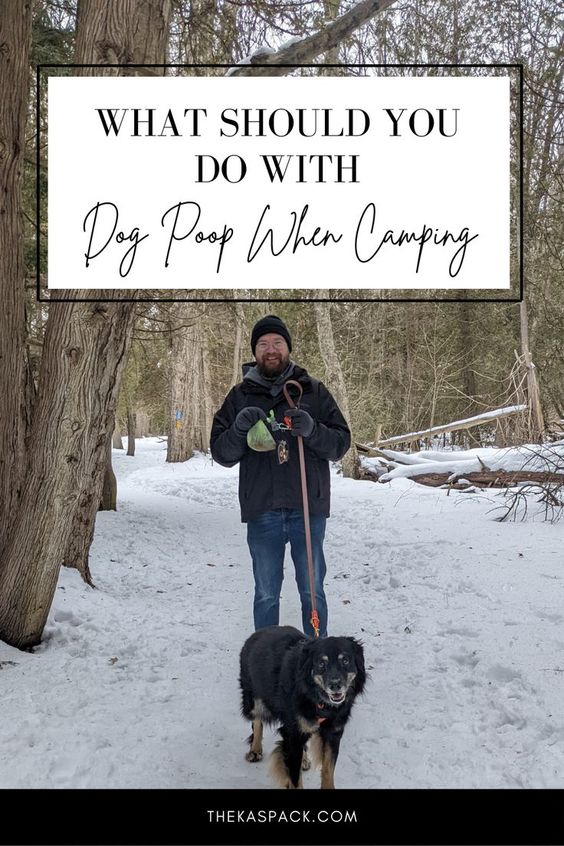What Do You Do With Dog Poop While Hiking?
It’s a topic that we don’t usually talk about when discussing the challenges of hiking with dogs. But it’s a subject that should be addressed.
Whether you’re new to hiking with dogs or have simply never been given this information before, we’re here to help.
What do you do with dog poop while hiking? The answer is one that shows respect both for other hikers and the environment.

This post contains affiliate links, which means if you click and buy, we will make a commission (at no cost to you). See my full disclosure policy for more details.
Is Dog Poop Harmful to the Environment?
One of the biggest misconceptions in the pet world is the idea that dog poop is no different than the poop left by wildlife every day. After all, poop is poop, right? Wrong. The truth is that your dog’s poop could be doing a lot of harm to the ecosystem in your favourite park or hiking trail.
The big difference between your dog’s waste and that of the wild animals in the area is what they eat. Everything that the wildlife consumes was found and produced within their ecosystem. It’s part of the greater cycle that keeps everything alive and co-existing. When the scat from coyotes, raccoons, squirrels, and other animals breaks down, the nutrients are once again returned to the ecosystem to fuel the local plant life and keep this careful balance flowing.
Any seeds in their waste are also transported to different areas of the ecosystem, allowing plant life to spread and grow naturally.
But, when we feed our dogs while hiking, the nutrients they are ingesting are from an outside source – whether that’s commercial dog food or one you have made yourself. This means a different balance of nutrients than the one that naturally occurs in the area. For example, many commercial dog foods are high in nitrogen. This, in turn, changes the nutrients found in the soil which can disrupt the fragile balance within the ecosystem.
There is also the risk that your dog is a carrier of parasites, viruses, or bacteria that could be hazardous to the local wildlife. If he’s not showing symptoms of an infection, he likely has not been tested. But that doesn’t mean that he’s not carrying something that you’re unaware of.
These illnesses can respond differently from one species to the next. A bacterial infection that doesn’t even cause symptoms in your dog could prove fatal to local wildlife when they encounter your dog’s waste.

Is It Okay to Leave Dog Poop in the Woods?
No, it’s not okay to leave your dog poop in the woods – or anywhere you visit (such as the park, the campground, or the dog beach). As responsible dog owners, it is our duty to clean up behind our dogs anywhere we go. This means packing up dog poop while hiking and taking it with you when you leave.
Not only is dog poop toxic to the local ecosystem, but it’s also not a sight that any hiker wants to encounter when out enjoying the wilderness.
Always follow the Leave No Trace principles for spending time outdoors. This includes disposing of any waste properly including waste created by your pet. When preparing for your next hiking adventure, make sure to take this into consideration and plan accordingly.
Where Do You Put a Poop Bag When Walking a Dog?
If you’re heading out for a shorter hiking trip and not planning on carrying a hiking pack, you may be wondering where to put a poop bag when walking your dog. This includes both the roll of bags that you will need to clean up his waste and the used bag after picking it up while you search for a proper place to dispose of it. After all, no one wants to be handling dog poop while hiking any more than necessary!
The great news is that there are many products designed to make this easy and as painless as possible.
We highly recommend investing in a dog poop holder for hiking. This is a simple product that can be hooked onto your leash or belt loop to keep your dog’s poop bags close at hand when they are needed. They come in a variety of different colors, shapes, sizes, and materials. The most common is a basic hard plastic bag holder. Alternatively, we had some fun leather bag holders made by a local business owner.
You can also purchase bag holders for used bags, allowing you to hang the bag from your dog’s leash so that you don’t have to physically carry it. With these options, there is no excuse for leaving dog poop behind on the trails.
Keep an eye open at the trailhead. Many parks and conservation areas will provide dog poop stations to encourage owners to pick up after their pups. These include dog poop bags for those who may have forgotten to bring them as well as a dog poop bin to dispose of waste after your hike.

How to Dispose of Dog Poop on Multi-Day Hikes
The best way to address dog poop on longer hikes will depend on how long you are planning to travel.
You can purchase a dog poop container for hiking that will hold your dog’s waste and block unwanted odors. The Tuff Mutt Dog Poop Bag Holder, for example, is a fabric pouch with an activated carbon liner to contain smells. It can carry 3 large poops or several smaller ones, making it feasible for an overnight trip. Similarly, the Dog Doo Tube keeps odors safely contained in a hard plastic tube with a tight-fitting lid to prevent odours from escaping. It clips onto your hiking pack and carries multiple used bags.
For longer trips, however, these products simply aren’t going to be enough. No one is going to cover their pack in multiple poop bag holders just to keep up! In these situations, you will need to look to the recommendations for backcountry camping and backpacking, which is to bury human waste and, also, your dogs. Make sure that you are buying any waste approximately 8 inches deep below ground and at least 200 feet away from any campsite or water source.

What products do you use to help manage dog poop while hiking? We invite you to share your recommendations in the comments.
